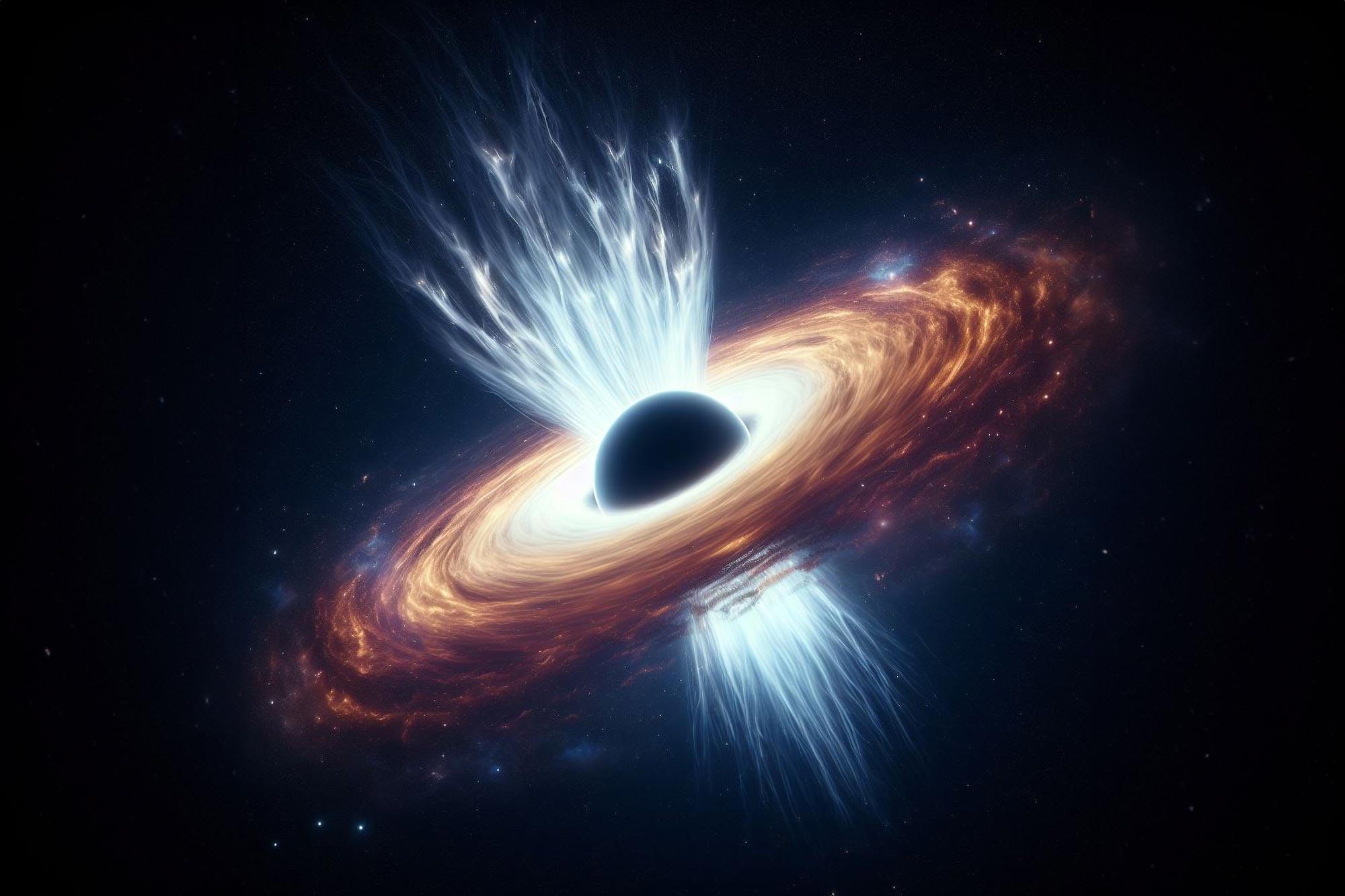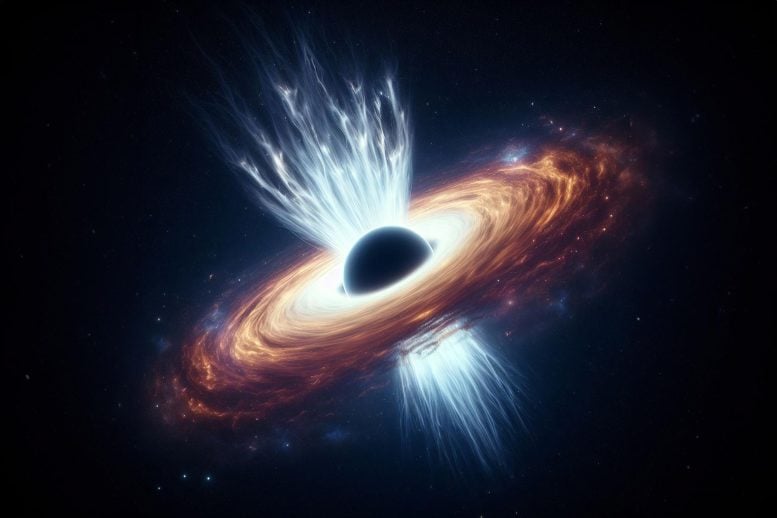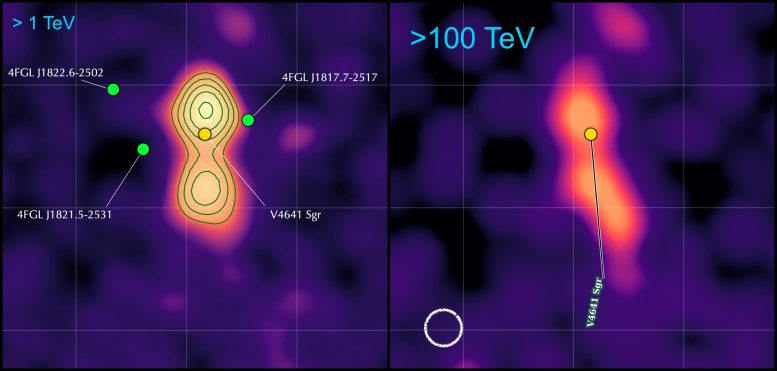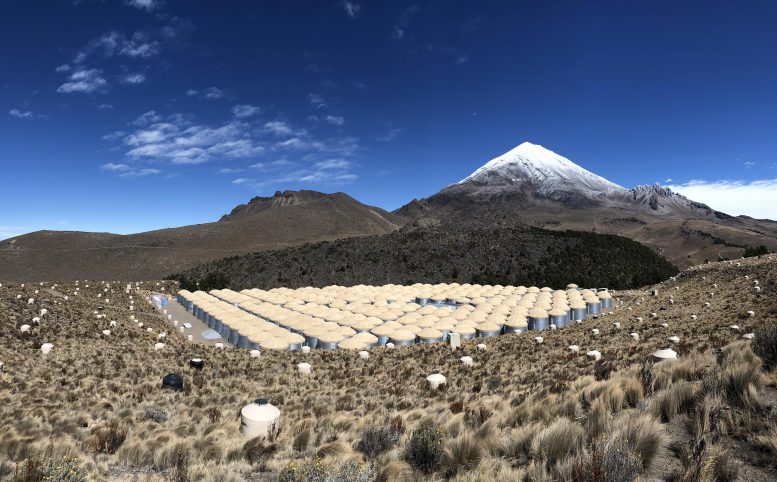

Microquasars within the Milky Way, like V4641 Sagittarii, have been discovered to emit photons with energy levels previously attributed only to distant quasars.
This revelation from the HAWC observatory indicates that these local objects might significantly contribute to cosmic radiation, offering a closer view of mechanisms akin to those in active galactic nuclei. This shifts our understanding and allows for clearer, more direct study of cosmic ray emissions and jet formation processes.
Revolution in Cosmic Radiation Study
Extremely high-energy electromagnetic radiation is not only produced by jets from the active cores of distant galaxies but also by jet-launching objects within our own Milky Way, known as microquasars. This groundbreaking discovery by scientists from the international High-Altitude Water Cherenkov Gamma-Ray Observatory (HAWC) significantly alters our understanding of how ultra-high-energy cosmic radiation is formed, marking a major shift in the study of these phenomena.
Since the discovery of cosmic radiation by Victor Hess in 1912, astronomers have believed that the sources responsible for accelerating these particles to the highest energies in our galaxy were the remnants of massive supernova explosions, known as supernova remnants. However, new data from the HAWC observatory presents a different view: microquasars are now emerging as the sources of this extremely high-energy radiation. Astrophysicists from the Institute of Nuclear Physics of the Polish Academy of Sciences (IFJ PAN) in Cracow, supported by a grant from the National Science Centre, played a crucial role in this discovery.

High-Energy Phenomena at HAWC
The HAWC observatory was erected on the slope of the Sierra Negra volcano in Mexico with the aim of recording incoming particles and photons from space at particularly high energies. The facility consists of 300 steel water tanks equipped with photomultipliers sensitive to fleeting flashes of light, known as Cherenkov radiation. This appears in the tank when a particle traveling faster than the speed of light in water falls into it.
Typically, the HAWC captures gamma photons with energies ranging from hundreds of gigaelectronvolts to hundreds of teraelectronvolts. These are energies up to a trillion times greater than the energy of visible light photons and over a dozen times greater than the energy of protons accelerated at the Large Hadronic Collider (LHC) accelerator.

The Role of Quasars and Microquasars
The supermassive black holes within quasars, i.e. the active nuclei of some galaxies (objects with enormous masses, numbering in the hundreds of millions of solar masses) accelerate and absorb matter from the accretion disk that surrounds them. During this process, very narrow and very long streams of matter, called jets, are shot out from near the poles of the black hole, in both directions along its rotation axis. These move at velocities often close to the speed of light, resulting in shock waves – and it is there that photons of extremely high energies, reaching up to hundreds of tera-electronvolts, are produced.
Located in the nuclei of other galaxies, quasars are among objects that are very distant from us: the nearest (Markarian 231) is 600 million light years away from Earth. This is not the case for microquasars. These are compact binary systems, made up of a massive star and its matter-absorbing black hole, which emit jets with lengths of hundreds of light years. Several tens of such objects have so far been discovered in our galaxy alone.
Unprecedented Observations of Microquasars
“Photons detected from microquasars have usually much lower energies than those from the quasars. Usually, we are talking about values of the order of tens of gigaelectronvolts. Meanwhile, we have observed something quite incredible in the data recorded by the detectors of the HAWC observatory: photons coming from a microquasar lying in our galaxy and yet carrying energies tens of thousands of times higher than typical!” says Dr. Sabrina Casanova (IFJ PAN), who, together with Dr. Xiaojie Wang from Michigan Tech University and Dr. Dezhi Huang from University of Maryland were the first to observe the anomaly.
The Significance of V4641 Sagittarii
The source of photons with energies of up to 200 teraelectronvolts has been found to be the microquasar V4641 Sagittarii (V4641 Sgr). It lies in the background of the Sagittarius constellation, at a distance of about 20,000 light years from Earth. The main role here is played by a black hole with a mass of about six solar masses, pulling in matter from the stellar giant with a mass three times that of the Sun. The objects orbit around a common centre of mass, circling each other once in just under three days. Interestingly, the jet emitted by the V4641 Sgr system is directed towards the Solar System. In this configuration, an Earth-based observer has a relativistically distorted perception of the time of the matter at the beginning and end of the jet: its front begins to appear younger than it actually is. As a result, the jet seems to propagate through space at superluminal velocity, in the present case as much as nine times the speed of light.
“Significantly, the V4641 Sgr microquasar turns out not to be unique. Extremely energetic photons are meanwhile detected not only from this but also from other microquasars, detected by the LHAASO observatory. It therefore seems likely that microquasars significantly contribute to the cosmic ray radiation at the highest energies in our galaxy,” adds Dr. Casanova.
Conclusion: A New Era in Astrophysics
The latest discovery is of interest not only to cosmic ray scientists. It proves that at a relatively small distance from Earth, mechanisms of jet formation and production of ultra-energetic photons must be at work analogous to those in the nuclei of active, distant galaxies, scaled appropriately to the mass of the black hole.
These processes in microquasars occur on a much more human-friendly timescale – over days, not hundreds of thousands or millions of years. Moreover, the photons emitted by microquasars do not have to make their way through the millions of light-years of the cosmic vacuum, where they can be scattered or absorbed during interactions with photons of the ubiquitous cosmic background radiation.
All this means that astrophysicists have, for the first time, gained the ability to make comprehensive and virtually undisturbed observations of processes crucial to the evolution of galaxies.
Reference: “Ultra-high-energy gamma-ray bubble around microquasar V4641 Sgr” by R. Alfaro, C. Alvarez, J. C. Arteaga-Velázquez, D. Avila Rojas, H. A. Ayala Solares, R. Babu, E. Belmont-Moreno, K. S. Caballero-Mora, T. Capistrán, A. Carramiñana, S. Casanova, U. Cotti, J. Cotzomi, S. Coutiño de León, E. De la Fuente, D. Depaoli, N. Di Lalla, R. Diaz Hernandez, B. L. Dingus, M. A. DuVernois, M. Durocher, J. C. Díaz-Vélez, K. Engel, C. Espinoza, K. L. Fan, K. Fang, N. Fraija, S. Fraija, J. A. García-González, F. Garfias, A. Gonzalez Muñoz, M. M. González, J. A. Goodman, S. Groetsch, J. P. Harding, I. Herzog, J. Hinton, D. Huang, F. Hueyotl-Zahuantitla, P. Hüntemeyer, A. Iriarte, V. Joshi, S. Kaufmann, D. Kieda, C. de León, J. Lee, H. León Vargas, J. T. Linnemann, A. L. Longinotti, G. Luis-Raya, K. Malone, O. Martinez, J. Martínez-Castro, J. A. Matthews, P. Miranda-Romagnoli, J. A. Morales-Soto, E. Moreno, M. Mostafá, A. Nayerhoda, L. Nellen, M. Newbold, M. U. Nisa, R. Noriega-Papaqui, L. Olivera-Nieto, N. Omodei, M. Osorio, Y. Pérez Araujo, E. G. Pérez-Pérez, C. D. Rho, D. Rosa-González, E. Ruiz-Velasco, H. Salazar, D. Salazar-Gallegos, A. Sandoval, M. Schneider, J. Serna-Franco, A. J. Smith, Y. Son, R. W. Springer, O. Tibolla, K. Tollefson, I. Torres, R. Torres-Escobedo, R. Turner, F. Ureña-Mena, E. Varela, L. Villaseñor, X. Wang, I. J. Watson, E. Willox, S. Yun-Cárcamo and H. Zhou, 16 October 2024, Nature.
DOI: 10.1038/s41586-024-07995-9